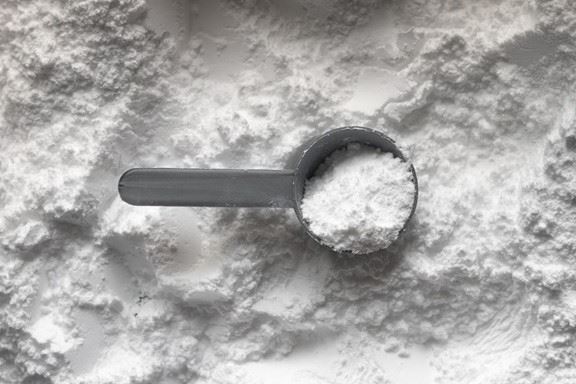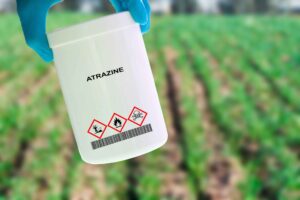The talcum powder lawsuits have been making headlines recently. Shocking allegations have claimed companies such as Johnson & Johnson were aware of the cancer-causing dangers of their talc-based products. The lawsuits against them and similar companies have reached the tens of thousands. However, the science behind these claims remains inconclusive. Here is everything you need to know about baby powder lawsuits.
What Are the Baby Powder Lawsuits?
The baby powder lawsuits are lodged by previous consumers of products that contain talcum powder. These lawsuits allege that the product manufacturers were aware that their baby powder products could cause cancer. Many organizations have long recognized asbestos, and possibly talc, as hazardous materials that are carcinogenic to humans.
Asbestos has been categorized as a human carcinogen by reputable organizations for decades, in some cases, since the 1970s. The following U.S. and international organizations list asbestos as a carcinogen:
- The U.S. Department of Health and Human Services (DHH)
- The U.S. Environmental Protection Agency (EPA)
- The International Agency for Research on Cancer (IARC) of the World Health Organization (WHO)
The U.S. government has recognized asbestos as a hazardous material for over 50 years. The EPA first listed asbestos as a hazardous air pollutant in 1971. Talcum powder comes from the mineral talc, which companies mine alongside asbestos. Talc sometimes contains cancer-causing asbestos. However, companies should remove the asbestos when they process talc into cosmetic talcum powder. Many experts hotly debate whether asbestos-free talcum powder causes cancer.
The plaintiffs of the talcum baby powder lawsuits claim that their use of baby powder is linked to the development of certain cancers. Generally, they argue that the baby powder contained asbestos and that the manufacturing companies were aware of the contamination and the risks of asbestos exposure.
Meanwhile, the baby powder companies, such as Johnson & Johnson, defend themselves in court by denying product liability. They claim that decades of scientific research reaffirm the safety of talc and that their products have always been asbestos-free, as maintained through careful selection, processing, and testing. Johnson & Johnson maintained this stance through the December 2018 Reuters investigative report and in court as recently as January 2019.
Despite this defense, thousands of consumers have filed product liability lawsuits alleging cancer links against Johnson & Johnson alone. Of the lawsuits that have sprung up from the baby powder issue, some have failed, and some have succeeded. The successes are documented in court damage awards, settlement agreements, and class action lawsuits around the country.
The Problem with Talc
In 2016, Johnson & Johnson registered their website, Facts About Talc, to spread the message that their baby powder is completely safe and that talc does not cause cancer. They include statements such as the following:
- “Talc has been used for centuries… dating back to ancient Egypt.”
- “Talc is more common than you think.”
- “Talc is safe.”
- “Talc does not cause cancer.”
The company backs up its claims with references to evidence such as 40 years of independent global studies and the National Cancer Institute. They list authoritative references on their website to back up their claims, such as The American Cancer Society articles and highly cited articles published in the American Journal of Epidemiology.
If Johnson & Johnson’s claims are correct and talc is safe, why are plaintiffs winning lawsuits against them?
Sometimes scientific articles distinguish between asbestos-free talc and asbestos-containing talc. Statements that asbestos-free talc does not cause cancer are then applied to baby powder manufacturers claiming their products are asbestos-free. However, claimants may question the truth of that asbestos-free assertion in lawsuits.
There are other faulty logical assumptions. For example, in 1976, the Cosmetic, Toiletry, and Fragrance Association required all cosmetic talc products to be asbestos-free. Some articles assume there was complete compliance by manufacturers after this point, including biased statements such as the perineal powder could have been potentially contaminated with asbestos “until 1976,” and the use of this powder before 1976 may have left consumers “potentially exposed to asbestos.” While these statements are true, they imply there was a zero-to-little possibility of asbestos in the powder after 1976.
An asbestos-free talcum powder may or may not cause an increased risk of cancer. However, if a baby powder manufacturer’s talc did contain small amounts of asbestos, these studies become irrelevant.
In 2021, the U.S. Food and Drug Administration (FDA) released the results of their asbestos testing in cosmetics that contained talc. It did not detect any asbestos in any of the 50 samples tested. However, a similar test in 2019 revealed asbestos in nine of 52 samples tested.
One of the asbestos-positive products in the FDA’s 2019 tests was Johnson & Johnson’s baby powder. After the test results, the company voluntarily recalled Johnson & Johnson’s Baby Powder Lot #223318RB. The same survey then tested a different lot number, which was negative for asbestos.
In 2018, in response to the Reuters investigative report, Johnson & Johnson stated that their cosmetic talc has been tested for decades and has been found not to contain asbestos. The investigative report cites multiple incidents of Johnson & Johnson’s asbestos-positive tests between 1971 and the 2000s that they failed to report to regulators. Johnson & Johnson maintains that the information in this report was erroneous.
In the wake of courtroom losses, Johnson & Johnson maintained that its talc is safe and asbestos-free. It blamed its losses on junk science, juror confusion, overzealous attorneys, and unfair court rules.
Johnson & Johnson’s asbestos-positive lot may have been a one-time occurrence, or it may indicate a bigger problem. However, it indicates that baby powder that touts asbestos-free talc may still contain asbestos.
Does Baby Powder Cause Cancer?
When considering whether baby powder causes cancer, there are two primary questions to ask:
- First, if baby powder contains trace amounts of asbestos, is this enough to cause cancer?
- Second, can talc still cause cancer if the baby powder is asbestos-free?
The answers to these questions can help determine whether baby powder can cause cancer.
Cancer and Trace Amounts of Asbestos
No level of asbestos exposure is considered safe for any type of asbestos product. Even low-duration exposures of several days have caused cancer. This sentiment is shared by U.S. federal agencies, including:
The CDC notes that asbestos is not a health risk except in limited situations. These include being handled or if asbestos deteriorates and releases fibers into the air. However, baby powder with trace amounts of asbestos would generally be handled and have the potential to release fibers into the air. Additionally, some animal studies have shown that low concentrations of talc and asbestos can damage ovarian health.
Cancer and Asbestos-Free Talc
There is a question as to whether even asbestos-free talc can be hazardous to people’s health. Currently, the International Agency for Research on Cancer (IARC) classifies talc products in the following ways:
- Talc containing asbestos is a Group 1, the same group as asbestos, which is labeled “carcinogenic to humans.”
- Talc-based body powder is a Group 2B, but only when used on the perineal; this group is considered “possibly carcinogenic to humans.”
- Talc not containing forms of asbestos and not used on the perineal area is in Group 3, which is “unclassifiable as carcinogenicity in humans.”
The IARC also has a Group 4, which is “probably not carcinogenic to humans.” The IARC does not currently list any talc-based products as Group 4.
The FDA does not regulate cosmetic products before they reach the market. Instead, the FDA monitors products already on the market for potential safety issues and then takes any necessary action. Talc is used in many cosmetic products in the U.S. that the FDA monitors. Since the 1960s, scientific research has noted a potential connection between using talc-based powders in the genital areas and ovarian cancer. However, no research has been conclusive. The FDA currently conducts ongoing research on this topic. Additionally, the FDA has been aware of the potential contamination of talc with asbestos since the 1970s.
So, while the FDA and the IARC do not conclusively state that talc is linked to cancer, they also do not claim that it does not cause cancer. These organizations generally agree that it might cause cancer, but more research is needed to make a definitive statement on the link between cancer and asbestos-free talc.
The Talcum Powder Lawsuits
Talcum powder has been suspected of harming humans for nearly a century. In the 1930s, researchers studied the link between people working in talcum environments, such as mines, and their health risks. In 1939, an article was published that studied the link between people without occupational exposure to siliceous dust, such as dust from talc, and silicon deposits in their tissues leading to serious fibrosis.
In the decades since, there have been ongoing questions regarding the safety of talcum powder:
- 1930s:
- Scientists begin to question talc’s risk to humans.
- 1970s:
- Researchers find talc particles within ovarian tumors.
- OSHA begins regulating fibrous talc as asbestos.
- Manufacturers begin separating asbestos from the talc used for talcum powder.
- 1980s:
- Research links talcum powder use in females to an increased risk of ovarian cancer — the risk is nearly doubled for talcum powder usage and more than tripled when used around the genitals.
- 1990s:
- A Johnson & Johnson memo suggests targeting opportunities to sell talcum powder products to Hispanic and African American women.
- The condom industry stops dusting condoms with talcum powder due to concerns about ovarian cancer risks.
- Specific genital talcum powder applications are associated with a more than 50 percent increased risk of ovarian cancer.
- 2000s:
- The FDA is unable to prove talc-containing cosmetics are asbestos-free.
Johnson & Johnson launched their baby powder product in 1893. Between 1965 and 2003, Johnson & Johnson sourced their cosmetic talc from a Vermont mine that produced 10 to 20 percent fibrous talc. The IARC would categorize this type of talc with asbestos content as Group 1: carcinogenic.
History of the Talcum Powder Lawsuits
A claimant filed the first lawsuit against Johnson & Johnson in 2013. With the success of this first case, thousands of cases soon followed, including class actions and cases against multiple defendants who used talcum powder in their products. Some of the first cases included:
- 2013: The first talcum powder lawsuit is filed against Johnson & Johnson; Berg v. Johnson & Johnson
- 2017: The first class action talcum powder lawsuits are filed against Johnson & Johnson; Fox v. Johnson & Johnson
- 2017: The first talcum powder lawsuit is filed against Colgate-Palmolive, alleging mesothelioma; Lyons v. Colgate-Palmolive
- 2017: The first talcum powder lawsuit is filed against Rite Aid Corporation, Imerys Talc America, and Personal Care Products Council; Kleiner v. Rite Aid Corporation, et al.
The claims in these lawsuits range from ovarian cancer to mesothelioma. Some lawsuits were successful, and in other cases, the corporations prevailed.
Companies Named in Lawsuits
Since the lawsuits started nearly 10 years ago, claimants have named multiple retailers, brands, distributors, and manufacturers of talcum powder products in the baby powder lawsuits. These companies include, but are not limited to:
- Johnson & Johnson
- Vanderbilt Minerals
- Colgate-Palmolive
- Whittaker, Clark & Daniels
- Imerys Talc North America
However, there are other companies against which you may be able to file a baby powder lawsuit.
Talc Products Involved in the Lawsuits
Many cosmetic products contain talc. Some of the talc-based products that claimants named in previous lawsuits include the following:
- Johnson’s Baby Powder
- Johnson & Johnson’s Shower to Shower
- Old Spice Powder
- Gold Bond Extra Strength Body Powder
- Gold Bond Body Powder
- Gold Bond No Mess Powder Spray
Johnson & Johnson’s Response to the Talcum Powder Lawsuits
Johnson & Johnson has long maintained the safety of their products, claiming that their talcum powder products are asbestos-free. Their website, Facts About Talc, claims that thousands of tests on Johnson & Johnson products, including those performed by universities and independent laboratories, back up their asbestos-free claims.
However, Johnson & Johnson announced in 2022 that they would discontinue the use of talcum powder in their products in 2023. They plan to switch from talcum powder to cornstarch powder. Their announcement maintains that the switch from talcum powder is not due to the 40,000 current lawsuits claiming their products contributed to ovarian cancer and mesothelioma. Instead, they call the switch a commercial decision designed to keep pace with current market trends and consumer needs.
Certainly, their decision to switch away from talcum powder does not prove complicity in the baby powder lawsuits. Defending against 40,000 lawsuits is expensive and exhausting, even for innocent parties. Eliminating talcum powder should help the company avoid additional lawsuits in the distant future. However, this move does not indicate their innocence.
Filing a Talcum Powder Lawsuit
People who have been diagnosed with cancer and use talcum powder products may be eligible to file a lawsuit. Very possibly, talcum powder products, such as Johnson’s Baby Powder, may have caused catastrophic injury to many more consumers than have already filed legal claims.
Who Can File a Talc Claim
People who are most eligible to file a personal injury baby powder claim include those who have used a talcum-powder-based product continuously for several years and have been diagnosed with ovarian cancer or mesothelioma. Ovarian cancer research often links using talcum powder in the genital region. Women with ovarian cancer who use talcum products on genital areas may have more substantial claims.
People affected by the devastating effects of talcum powder products are generally eligible to file a legal claim. Sometimes this may include family members who were indirectly affected by the diagnosis or loss of a loved one. If you are unsure of your eligibility, an experienced personal injury lawyer can answer your questions.
Deadline for Filing a Lawsuit
The states in the U.S. have different statutes of limitations that dictate how much time people have to file lawsuits for different issues. Many statutes of limitations range from one to four years. For cases like the baby powder lawsuits, the statute of limitations begins when the person discovers their condition is linked to using a talcum-based product. A lawyer can advise potential claimants of their statute of limitations based on their situation and state.
Timeline of a Talcum Claim
The first step to filing a talcum powder claim is to determine eligibility. Most people will want to consult an attorney to determine their eligibility, the potential strength of their case, and any looming deadlines they should be aware of.
Once their case has been deemed eligible, the next step is often hiring a trusted lawyer with experience in similar cases. Their lawyer can handle paperwork, deadlines, evidence collection, argument formulation, litigation, and any out-of-court settlement negotiations.
Once the claimant files their lawsuit, they may spend significant time waiting. Some lawsuits resolve in less than a year. However, many other lawsuits can take multiple years before they reach a final court decision or an out-of-court settlement agreement. When potential claimants consider filing a baby powder lawsuit, they should understand the length of time that the legal process may take. For this reason, many people may hire a lawyer who works on a contingency fee basis. This means that they do not need to pay their attorney outright. Instead, the attorney deducts their fees from the court’s damage awards or settlement agreement.
Value of a Talcum Powder Settlement or Payout
Talcum powder compensation is generally relatively high since claimants based these lawsuits on life-threatening cancer diagnoses. However, each case is unique, and a baby powder claimant may receive nothing, or their compensation may range from thousands to millions of dollars.
File a Talcum Powder Lawsuit
Ovarian cancer and mesothelioma are devastating diseases. To learn they may have been prevented by avoiding certain products is a heartbreaking realization. If a doctor has diagnosed you or a loved one with these cancers after using talcum-based powders, you may be eligible to file a talcum powder lawsuit. Contact the attorneys at Morris & Dewett to schedule your initial consultation.









